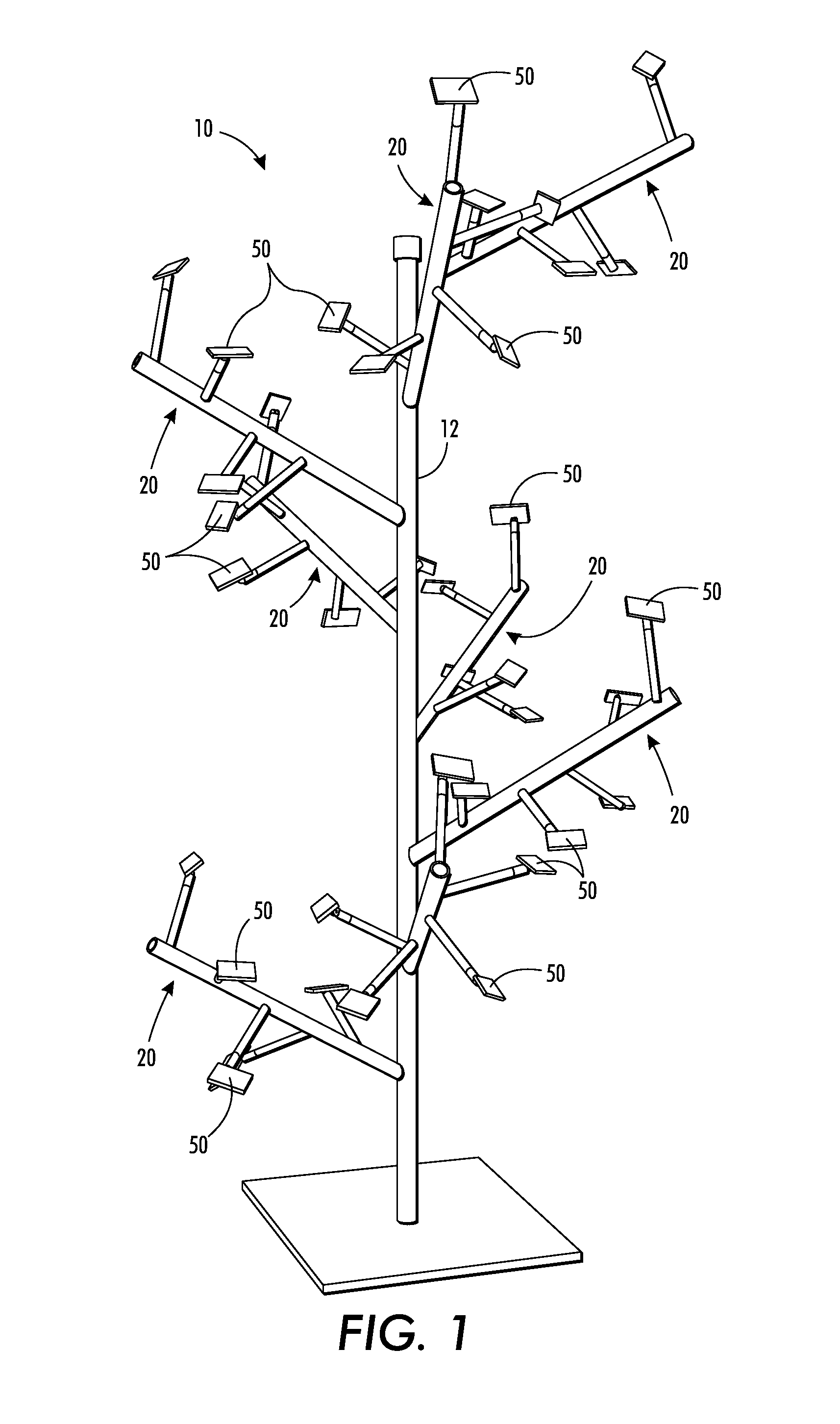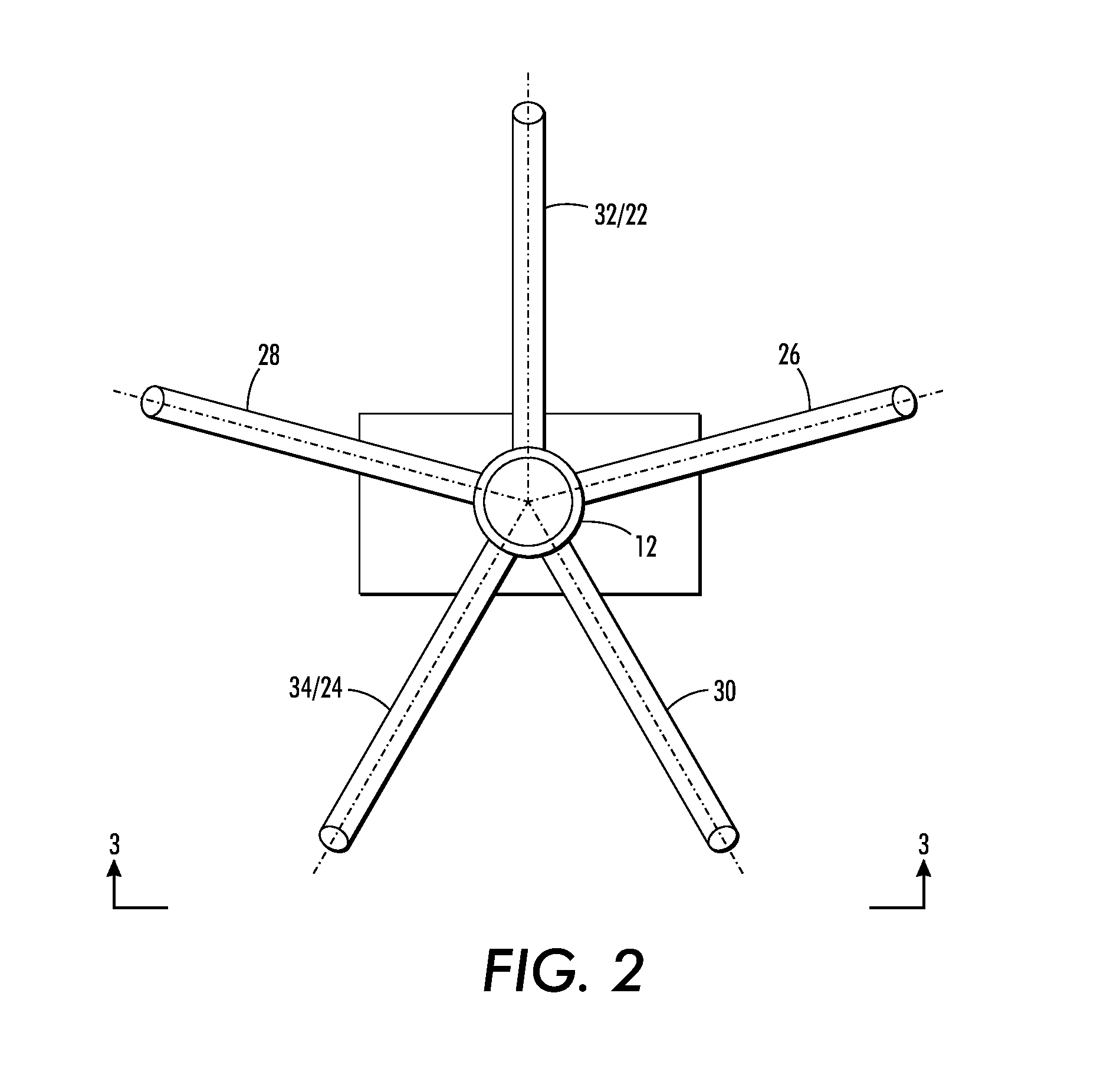Photovoltaic array utilizing phyllotaxic architecture
a photovoltaic array and phyllotaxic technology, applied in the direction of pv power plants, heat collector mounting/support, lighting and heating apparatus, etc., can solve the problems of reducing the efficiency of a conventional pv array, compromising the production of electricity, and adding cost and maintenance to tracking devices, etc., to achieve the effect of improving the efficiency of photosynthesis
- Summary
- Abstract
- Description
- Claims
- Application Information
AI Technical Summary
Benefits of technology
Problems solved by technology
Method used
Image
Examples
example
Array Design
[0064]It is to be understood that the following example is illustrative of one embodiment of the invention; the invention is not limited in any way to this example.
[0065]A solar array was constructed in accordance with the teachings in this disclosure, using a 2 / 5 Fibonacci ratio. Dimensions provided in this example are approximate. The central trunk, primary, and secondary branches were made of polyvinyl chloride (PVC) piping. The central trunk measured 78 inches in length and 9 inches in diameter. The primary branches were 36 inches in length and 3 inches in diameter. The secondary branches were 18 inches in length and 1% inches in diameter. The central trunk served both as a support for the entire PV assembly joined thereto, and as a central conduit for wiring and electronic components relevant to the operation of the array. The central trunk was provided with a support base, thereby permitting the array to be free-standing. Alternatively, the central trunk could be m...
examples
Alternative Embodiments Having Different Fibonacci Ratios
[0087]It is to be understood that the following examples of alternative designs are illustrative of alternative embodiments of the invention; the invention is not limited in any way to these examples.
Common Features of Array Designs
[0088]The following exemplary solar arrays, which may be fabricated according to the general teachings of this disclosure share a number of common features with each other, and with the above recited EXAMPLE solar array having a 2 / 5 Fibonacci ratio. The solar arrays are comprised of a central trunk, which is typically oriented vertically. The central trunk and its primary and secondary branches are made of a suitable structural material, such as e.g., aluminum tubing or PVC piping. The dimensions of the vertical length of the central trunk may be specified to any size but should accommodate the size of the PV panels utilized and the anticipated site of the PV array. In certain preferred embodiments,...
PUM
 Login to View More
Login to View More Abstract
Description
Claims
Application Information
 Login to View More
Login to View More - R&D
- Intellectual Property
- Life Sciences
- Materials
- Tech Scout
- Unparalleled Data Quality
- Higher Quality Content
- 60% Fewer Hallucinations
Browse by: Latest US Patents, China's latest patents, Technical Efficacy Thesaurus, Application Domain, Technology Topic, Popular Technical Reports.
© 2025 PatSnap. All rights reserved.Legal|Privacy policy|Modern Slavery Act Transparency Statement|Sitemap|About US| Contact US: help@patsnap.com



